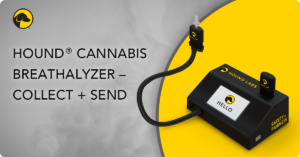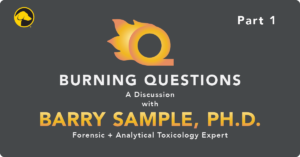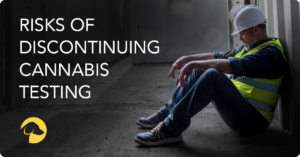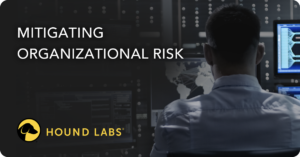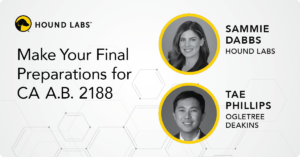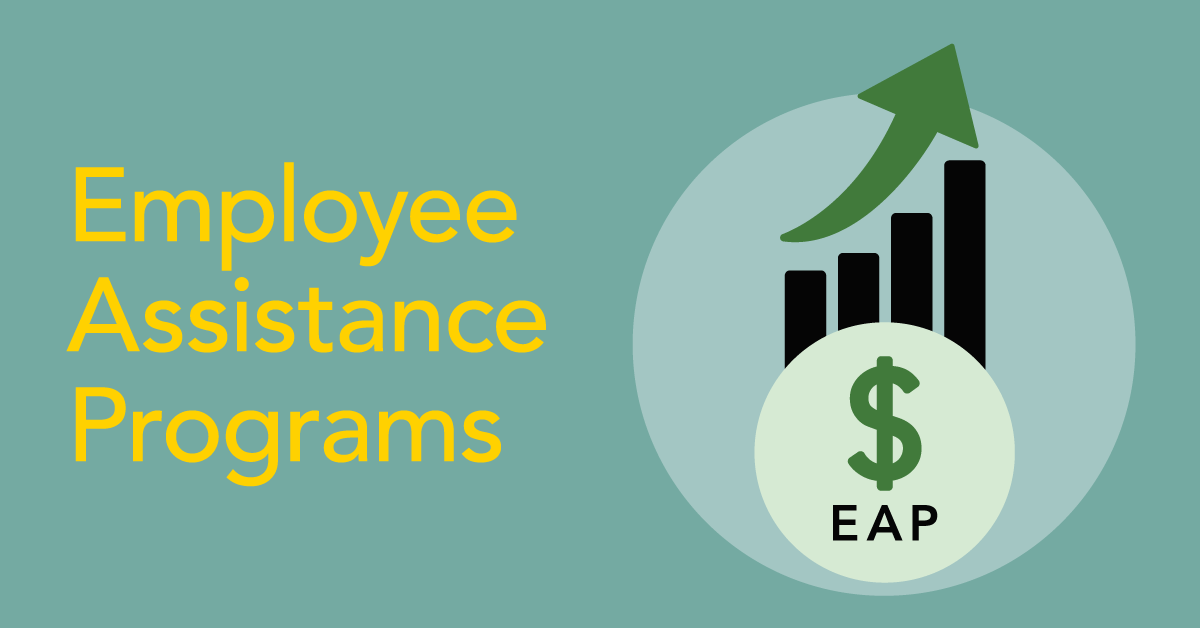
EAPs Have Never Been More Important
Now more than ever, employers may want to consider investing more in their Employee Assistance Programs (EAPs) to better manage changes to cannabis legalization, increasing legal use of cannabis, a shift away from zero tolerance policies, a tight labor market, and increasing employee interest in addressing mental health issues.
WHAT IS AN EAP?
“EAPs are a professional assessment and referral and | or short-term counseling services offered to employees with alcohol, drug, or mental health problems that may affect their jobs.”1 Employers establish EAPs with the goal of assisting employees to improve their health and the health of the workplace. Employers offer EAPs as a benefit to employees, most often as part of their health insurance package. In most cases, an employer contracts with a third-party company to manage its EAP and the variety of services offered.
EFFECTIVE DRUG TESTING PROGRAMS INCLUDE EAPs
EAPs have long been part of effective workplace drug and alcohol testing programs and part of overall risk mitigation and drug deterrence program strategies. The most effective drug testing programs not only help with risk mitigation and the deterrence of drug use in the workplace, but also focus on recovery to help employees return to the workplace – one of the goals of EAPs.
BRIEF HISTORY OF EAPs
Employers established the first Employee Assistance Program or EAP in the 1930s to help employees address alcoholism. EAPs grew in popularity and expanded their services to include drug abuse and other mental health issues until2 declining financial resources in the 1980s resulted in many cuts that hampered the programs’ effectiveness. Following 9/11, employers began investing again in EAPs, offering a broad range of services, including mental health counseling to mitigate the impacts of traumatic events on the workplace. The Covid-19 pandemic has once again shed light on the importance of mental health in the workplace, including substance abuse.
The confidential services available to employees through their EAPs vary from program to program and employer to employer; some provide only telephone-based national coverage while others allow for robust in-person counseling.
What’s interesting is that even as employers started to increase their investment in EAPs, employees often didn’t take advantage of their services. For years, employers and industry pundits have referenced the underappreciation and underutilization of EAPs. Recently, that trend seems to be reversing. A 2021 study by The Hartford3 found that 70% of employers surveyed have seen an increase in the utilization of their Employee Assistance Programs.
CANNABIS LEGALIZATION, ZERO TOLERANCE, AND EAPs
Since California first legalized medicinal cannabis in 1996, access to cannabis has continued to expand and it is now estimated that 183 million people could choose to use legal cannabis in 2022. Education about the impacts of cannabis have not kept pace with legalization. While most employees use cannabis legally outside of work hours, use in the workplace has steadily increased, although to what extent remains unclear.
What is clear is the limited effectiveness of zero tolerance policies to address the increase in use. Prior to cannabis legalization, many companies had zero-tolerance policies which meant that employees who tested positive could lose their jobs. Continuing cannabis legalization, increasing legal use, and a tight labor market have caused employers to reexamine their zero-tolerance drug testing policies and their investment in EAPs. This new landscape makes an effective EAP program more valuable than ever.
Understanding the benefits of EAPs in the era of cannabis legalization, how they relate to risk mitigation, and how they could help balance safety with fairness can be more easily explained through example.
THE BENEFITS OF AN EAP TO A MID-SIZED COMPANY WITH 300 EMPLOYEES
For example, let’s consider a mid-sized company with 300 employees that annually performs random drug testing (including cannabis) on 50% of their employees. Let’s assume they still have a zero-tolerance approach to drug and alcohol testing that requires anyone who tests positive to be terminated from employment with the benefit of an EAP.
Assuming a 3% positivity rate, approximately five people would be terminated. A vacant position not only disrupts the business but also causes disruptions for the employees remaining at the company. In addition, the company incurs the additional costs of recruiting, training, and onboarding a new employee. If the employees have been technically trained, in addition to the loss of employment for the employees, the cost to the employer could be as much as $10,000 per terminated employee, totaling $50,000. That’s in stark contrast to the average cost of offering EAPs to employees which averages between $30-$50 per employee.
Using that same example and a recovery-centric policy, those employees would have the opportunity to work confidentially with the company EAP instead of being terminated outright. The employee assistance (EA) professionals would assess the extent of the drug use and devise a return-to-work program for each individual employee. Once the terms of that program are met and a return-to-duty agreement signed by the employee and the employer, the employee can return to duty with far less cost and disruption than recruiting, training, and replacement of the individual. EA professionals are trained to assess the extent of the use and recommend individual treatment and testing programs for each person.
CHOOSING THE RIGHT CANNABIS TEST
Expanding the example even further, let’s consider the use of emerging breath technology such as the ultra-sensitive technology available through the HOUND® CANNABIS BREATHALYZER. Employers who decide to use the Hound® breathalyzer can have test results on-premises in about 20 minutes. The results from cannabis breath testing only reflect recent use – most likely reducing the number of positive results. Testing breath likely reduces the number of THC positives because only those employees who used within a few hours of the test would be identified as positive (non-negative). However, it’s important to note that like alcohol breathalyzers, cannabis breathalyzers do not indicate a substance abuse problem, they just provide objective data about use within a few hours of the test. It is the role of the EA professional to determine if an employee may be struggling with drug use.
BREATH TESTING CAN INCREASE ROI ON AN EAP
Combining an EAP and the HOUND® CANNABIS BREATHALYZER helps to create a more effective drug testing program focused on mitigating risk, maintaining safety, and keeping employees. Costs and programs vary but tools like the Hound® cost savings calculator can help employers more accurately predict the impact of fewer non-negative results from cannabis testing for their companies. The University of Maryland offers guidance for calculating ROI for EAP programs.

January 13, 2022
By NINA M. FRENCH
Share

